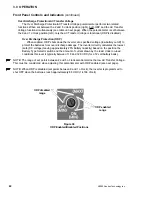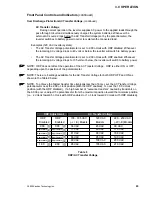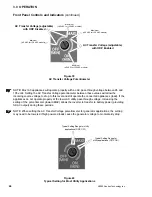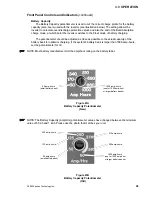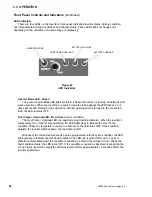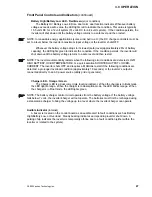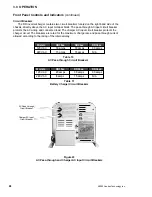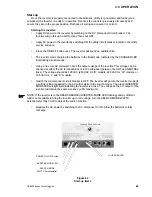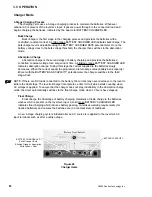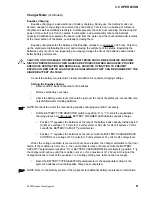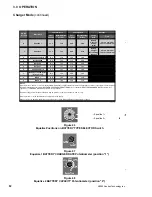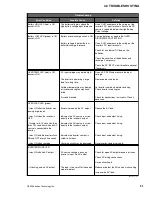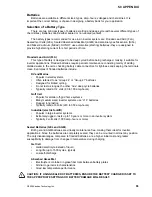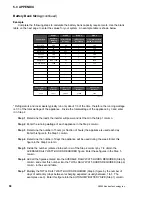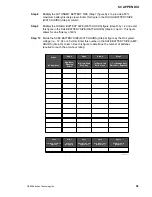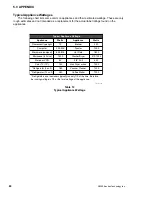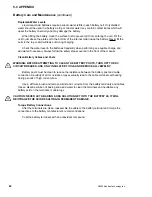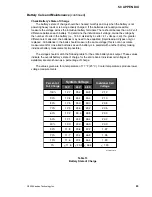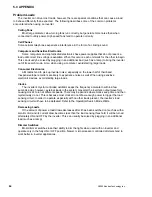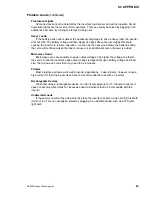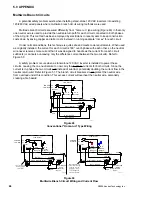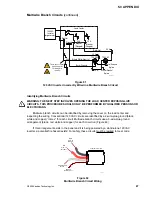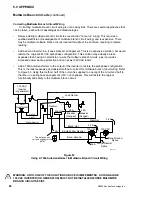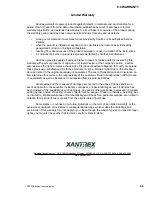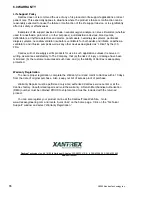
5.0 APPENDIX
55
©2000 Xantrex Technology Inc.
Batteries
Batteries are available in different sizes, types, amp-hours, voltages and chemistries. It is
important the correct battery is chosen in designing a battery bank for your application.
Selection of a Battery Type
There are two principal types of batteries: starting and deep-cycle (with several different types of
chemistries). Batteries can be either sealed or non-sealed (vented).
The battery types recommended for use in an inverter system are: Flooded Lead Acid (FLA),
Sealed Gel Cells (GEL), Sealed Absorbed Glass Mat (AGM); and alkaline types Nickel-iron (NiFe)
and Nickel-Cadmium (NiCad). DO NOT use automotive (starting) batteriesthey are designed to
provide high starting current for short periods of time.
Flooded Lead Acid (FLA)
This type of battery is designed to be deep cycled before being recharged, making it suitable for
inverter applications. Flooded batteries require periodic maintenance consisting mainly of adding
distilled water to the cells, checking battery cable connectors for tightness and keeping the terminals
clean. Examples of flooded batteries include:
RV and Marine
Popular in small systems
Often referred to as Group 24 or Group 27 batteries
Designed for limited cycling
Do not last as long as the other true deep cycle batteries
Typically rated at 12 volts (80 to 100 amp-hours)
Golf Cart
Popular for smaller off-grid home systems
Many medium sized inverter systems use L16 batteries
Rugged, long lasting
Typically rated at 6 volts (220 to 350 amp-hours)
Industrial (electric forklift)
Popular in large inverter systems
Extremely rugged - lasts up to 10 years or more in an inverter system
Typically 2 volt cells (1,000 amp-hours or more)
Sealed Batteries (GEL and AGM)
Both gel and AGM batteries are virtually maintenance free, making them ideal for inverter
applications. Since the batteries are completely sealed, they can be mounted in almost any position.
The only disadvantages, compared to flooded batteries, are a higher initial cost and greater
susceptibility to damage from changes in temperature during charging.
Gel Cell
Gelled electrolyte instead of liquid
Long life (up to 1500 cycles, typical)
Low self-discharge
Absorbed Glass Mat
Electrolyte is contained in glass-fiber mats between battery plates
Similar to gel cells in characteristics
Good low temperature performance
CAUTION: IF USING SEALED OF BATTERIES, ENSURE THE BATTERY CHARGER IS SET TO
THE APPROPRIATE SETTINGS OR BATTERY DAMAGE WILL RESULT.
Содержание Trace DR Series
Страница 1: ...Installation Operator s Manual DR Series Inverter Charger ...
Страница 2: ......
Страница 81: ......
Страница 82: ......
Страница 83: ......


